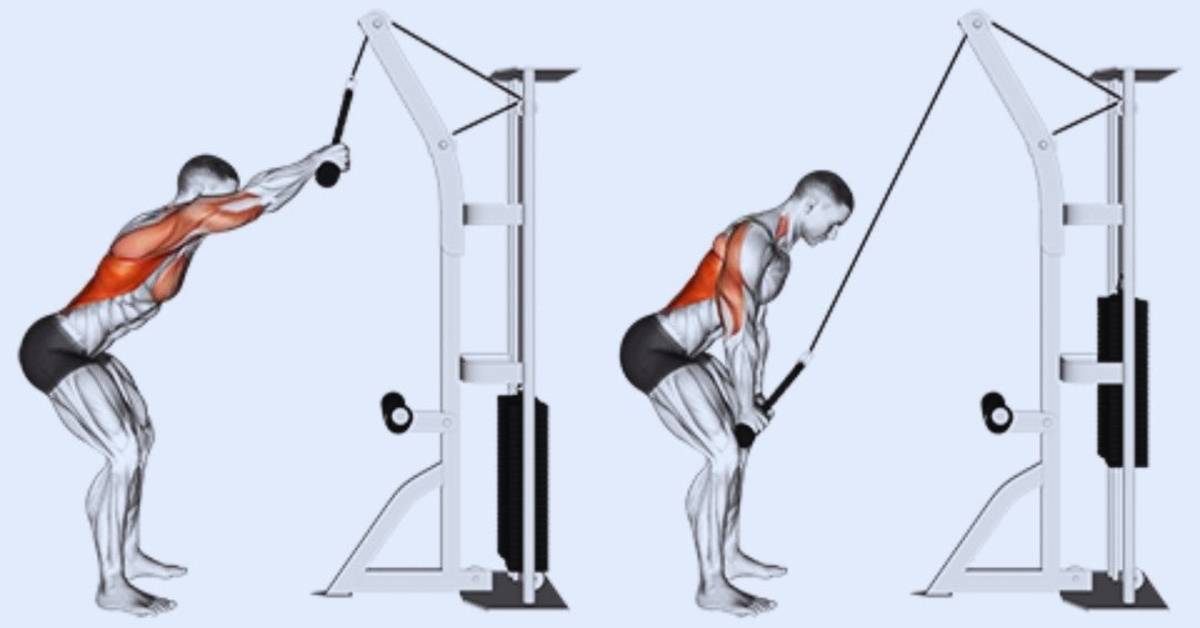Walking is a popular form of exercise that is accessible to people of all fitness levels. Whether you’re a fitness enthusiast or simply looking to incorporate more physical activity into your daily routine, understanding the time it takes to walk a certain distance can be helpful. In this article, we will explore “How long does it take to walk 3 Km?” and provide insights into the calories burned during this activity.
Average Walking Speeds
The duration of a 3 km walk depends on several factors, including individual fitness levels and walking speed. Walking speed is typically measured in kilometers per hour (km/h) or minutes per kilometer (min/km). Here are a few common walking speeds and the estimated time it takes to complete a 3-kilometer walk:
Brisk Walk (6 km/h or 10 min/km):
- Walking at a brisk pace of 6 kilometers per hour, it would take approximately 30 minutes to complete a 3-kilometer walk.
Moderate Walk (5 km/h or 12 min/km):
- Walking at a moderate pace of 5 kilometers per hour, it would take around 36 minutes to cover a distance of 3 kilometers.
Leisurely Walk (4 km/h or 15 min/km):
- Walking at a leisurely pace of 4 kilometers per hour, it would take about 45 minutes to walk 3 kilometers.
It’s important to note that these are estimated times and individual variations may occur.
Read Also: How Long is a 2km Walk? (Researched and Detailed Answer)
Factors Influencing Walking Time
While walking speeds provide a general idea of how long it takes to walk 3 kilometers, several factors can influence the actual time required. These factors include:
Fitness Level:
- Individuals with higher fitness levels may walk faster and complete the distance more quickly than those who are less physically active.
Age:
- Younger individuals tend to complete the walk in less time than older individuals.
Gender:
- Men typically walk faster and complete the 3 km walk in a shorter duration compared to women.
Terrain and Elevation:
- Walking on flat terrain will generally be faster compared to walking uphill or on uneven surfaces. The presence of hills or slopes can affect walking speed.
Environmental Factors:
- Weather conditions such as wind, rain, or extreme temperatures can impact walking speed and overall comfort during the activity.
Disease State:
- Individuals who are sick or injured may walk at a slower pace, resulting in more time taken to complete the walk.
Average 3km Walking Time by Age and Gender
When it comes to walking, individuals of different genders and ages often vary in their pace and duration. Men and women, even with similar fitness levels and age groups, tend to have different walking speeds. Moreover, older individuals generally walk at a slower pace compared to younger ones. In this article, we will analyze the average walking times for a 3 km distance based on age and gender, along with factors that can affect walking time. We will also explore the number of steps involved in a 3 km walk and the calories burned during this activity.
The following table presents the average walking times for a 3 km walk based on different age groups and genders:
Men’s Average Walking Times for 3 Km
| Age Group | Walking Speed | Average Time (in minutes) |
|---|---|---|
| 18-30 | Moderate | 35:00 |
| Brisk | 28:00 | |
| 31-40 | Moderate | 36:30 |
| Brisk | 29:00 | |
| 41-50 | Moderate | 38:00 |
| Brisk | 30:00 | |
| 51-60 | Moderate | 39:30 |
| Brisk | 31:30 | |
| 61-70 | Moderate | 41:00 |
| Brisk | 33:00 | |
| 71+ | Moderate | 43:00 |
| Brisk | 34:30 |
Women’s Average Walking Times for 3 Km
| Age Group | Walking Speed | Average Time (in minutes) |
|---|---|---|
| 18-30 | Moderate | 37:00 |
| Brisk | 30:00 | |
| 31-40 | Moderate | 38:30 |
| Brisk | 31:00 | |
| 41-50 | Moderate | 40:00 |
| Brisk | 32:00 | |
| 51-60 | Moderate | 41:30 |
| Brisk | 33:30 | |
| 61-70 | Moderate | 43:00 |
| Brisk | 35:00 | |
| 71+ | Moderate | 45:00 |
| Brisk | 36:30 |
How Many Steps Involve in a Three-Kilometer Walk? (Men and Women Combined)
On average, it takes approximately 4224 steps for both men and women combined to complete a 3 km walk. However, it’s important to note that the number of steps can vary depending on factors such as stride length, walking speed, and individual characteristics. Additionally, women tend to take shorter steps compared to men, resulting in a slightly higher number of steps to cover the same distance.
How Many Calories Are Burned Walking 3 KM?
When it comes to walking, not only provides a great opportunity for exercise but also allows you to burn calories. Walking a distance of 3 km can contribute to your calorie expenditure, although the exact number of calories burned can vary based on several factors such as terrain, walking pace, and body weight.
On average, walking 3 km non-stop can burn approximately 100 to 200 calories. However, it’s important to note that individual calorie expenditure may differ based on personal characteristics and exertion level during the walk.
Factors like walking speed and body weight play a significant role in determining the number of calories burned. Walking uphill at a faster pace, for instance, can lead to a higher calorie burn compared to walking on a flat surface. Similarly, individuals who weigh more tend to burn more calories due to the increased effort required to move their body weight.
To provide a better understanding, let’s look at an example of calorie burn for individuals of different weights walking 3 km at moderate and fast walking paces:
Here is a Table Showing the Estimated Calories Burned at Various Body Weights
| Body Weight (in pounds) | Body Weight (in kilograms) | Calorie Burn (3 km) |
| 100 | 45 | 120 |
| 120 | 54 | 144 |
| 140 | 64 | 168 |
| 160 | 73 | 192 |
| 180 | 82 | 216 |
| 200 | 91 | 240 |
| 220 | 100 | 264 |
| 240 | 109 | 288 |
| 260 | 118 | 312 |
| 280 | 127 | 336 |
| 300 | 136 | 360 |
Benefits of Walking
Walking is a simple yet powerful form of exercise that offers numerous health benefits. Here are some key advantages of incorporating walking into your daily routine:
Improved Cardiovascular Health
Walking regularly can improve your cardiovascular fitness by strengthening your heart and improving blood circulation. It helps lower blood pressure, reduce the risk of heart disease, and improve overall heart health.
Weight Management
Walking is an effective way to manage weight and support weight loss. It helps burn calories and boost metabolism, contributing to a calorie deficit. Regular walking, combined with a balanced diet, can lead to sustainable weight loss and weight maintenance.
Joint Health and Flexibility
Compared to other types of exercise, walking is a low-impact exercise that puts very little stress on your joints. It helps improve joint mobility and flexibility, reducing the risk of joint-related problems like arthritis. Walking can also strengthen the muscles around the joints, providing better support and stability.
Enhanced Mental Well-being
Walking has positive effects on mental health. During exercise, endorphins are released into the body, which is the “feel-good” hormone that can help reduce the symptoms of stress, anxiety, and depression. Walking outdoors in nature can have additional benefits, such as reducing stress levels and improving overall mood and well-being.
Increased Bone Density
Walking is a weight-bearing exercise that helps strengthen bones and increase bone density. Regular walking can help prevent conditions like osteoporosis and reduce the risk of fractures.
Boosted Immune System
Engaging in regular physical activity like walking can strengthen your immune system, making you less susceptible to common illnesses and infections. It can also improve your body’s ability to fight off diseases.
Reduced Risk of Chronic Diseases
Walking has been linked to a reduced risk of chronic diseases such as type 2 diabetes, certain types of cancer (e.g., breast and colon), and cardiovascular diseases. Regular walking helps control blood sugar levels, improve insulin sensitivity, and maintain a healthy weight, reducing the risk of these conditions.
Increased Longevity
There is evidence that regular walking increases the likelihood of living a long and healthy life. Walking regularly can contribute to a healthier lifestyle, better overall fitness, and a reduced risk of premature death.
Easy and Accessible
Among the many benefits of walking is that it is a very accessible mode of transportation. It does not require any special equipment or membership to a gym in order to do it. You can walk almost anywhere and at any time, making it a convenient exercise option for people of all ages and fitness levels.
Social Connection
If you are walking with friends, family, or groups, then it can be a social activity that allows you to connect with them. Sharing your walking routine with others can make it more enjoyable and motivating.
Is Walking 3 km in 30 Minutes Good?
Walking 3 km in 30 minutes is considered a good pace for most individuals. It indicates a moderate walking speed and can provide several health benefits. Based on the information analyzed, walking at this pace would require an average speed of approximately 6.0 kilometers per hour or 3.73 miles per hour. It is important to note that the perceived level of difficulty may vary depending on an individual’s fitness level and personal circumstances. It is always recommended to consult with a healthcare professional before starting any exercise routine to ensure it aligns with personal capabilities and goals.
Is it Possible to Lose Belly Fat by Walking 3 km a Day?
Walking 3 km a day can contribute to weight loss and potentially help reduce belly fat when combined with a balanced diet and overall calorie deficit. Walking is a low-impact aerobic exercise that can increase calorie expenditure and promote fat burning. It can also help improve cardiovascular health, increase overall physical activity, and manage stress levels.
To lose belly fat, it’s important to create a calorie deficit by burning more calories than you consume. Walking 3 km can help increase your daily calorie expenditure and contribute to creating this deficit. However, it’s essential to note that spot reduction, which specifically targets fat loss in one area of the body, is not possible. Fat loss occurs throughout the body as a whole, including the belly region.
In addition to walking, incorporating strength training exercises can help build muscle, boost metabolism, and further contribute to fat loss. A comprehensive approach that combines regular physical activity, a healthy diet, and lifestyle modifications is most effective for achieving sustainable weight loss and reducing belly fat.
It’s important to consult with a healthcare professional or a registered dietitian for personalized advice and guidance based on individual circumstances and goals. They can provide specific recommendations tailored to your needs and help create a comprehensive plan for achieving your desired results.
Make a Plan for Your Walking Routine
Planning your walking routine can help you stay consistent and make the most of your walking workouts. Here’s a simple guide to help you create an effective walking plan:
Set a Goal
Determine your objective, whether it’s improving cardiovascular fitness, losing weight, or simply staying active. Having a clear goal will guide your walking routine.
Start Slowly
If you’re a beginner, begin with shorter distances and gradually increase your walking time and distance over time. In this way, you will be able to adjust your body to the new situation and minimize the risk of injury.
Choose a Schedule
Decide on the frequency and duration of your walks. Most days of the week, walk for at least 30 minutes at a brisk pace. You can divide your walks into multiple sessions throughout the day if needed.
Warm Up and Cool Down
Prior to each walk, warm up with a few minutes of light stretching or walking at a slower pace. After your walk, cool down with a few minutes of gentle walking and stretching to gradually bring your heart rate back to normal.
Find Suitable Routes
Explore different routes that offer varied terrain and scenery to keep your walks interesting. Consider walking in parks, nature trails, or urban areas with sidewalks.
Monitor Intensity
While walking, maintain a brisk pace that elevates your heart rate and leaves you slightly breathless. However, you should still be able to carry on a conversation. Consider using a fitness tracker or pedometer to monitor your steps, distance, and progress.
Mix it Up
To prevent boredom and challenge your body, incorporate interval training or include some uphill sections in your walking routine. You can also alternate between power walking and leisurely strolls to add variety.
Stay Hydrated
Remember to drink water before, during, and after your walks, especially in hot or humid weather. Hydration is essential for optimal performance and overall well-being.
Listen to Your Body
During your walks, pay attention to any discomfort or pain. If you experience any unusual symptoms or injuries, take a break and seek medical advice if needed.
Track Your Progress
Keep a record of your walking sessions, including the distance covered, time spent, and any milestones achieved. The goal of this is to keep you motivated and to be able to track your progress over time as you progress.
Remember, everyone’s walking routine may vary based on their fitness level, goals, and time availability. It’s always advisable to consult with a healthcare professional or fitness expert before starting any new exercise program, especially if you have any underlying health conditions.
Happy Walking!









